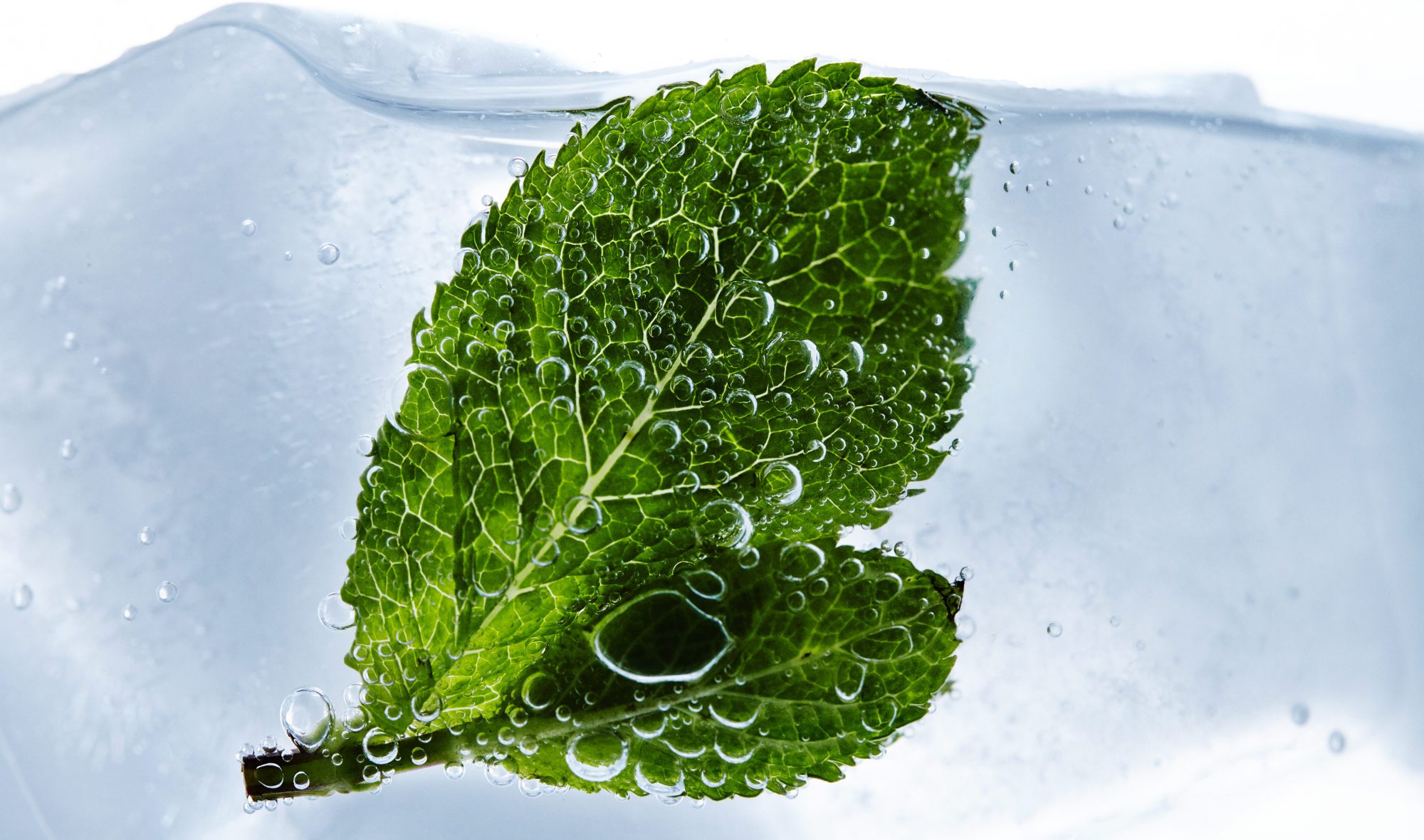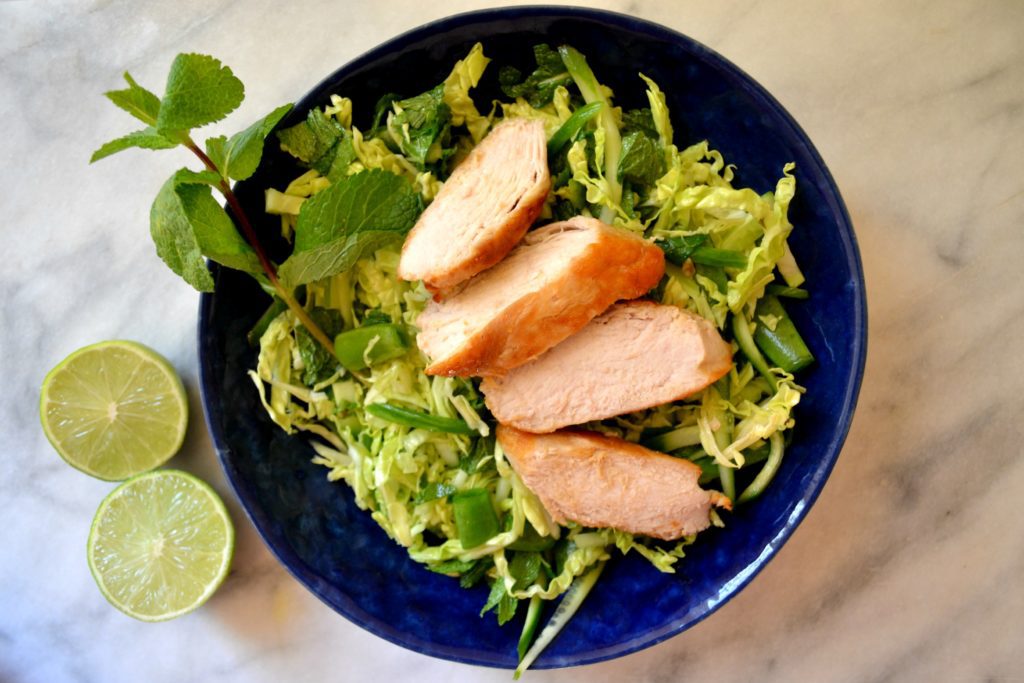
Join PN Level 2 for less than $9 USD/day! Affordable monthly payments now open.

Mint is an aromatic herb known for its bright, clean flavor. While many varieties exist, the most common is probably spearmint: a fairly mild, versatile herb that can be used in savory and sweet recipes. Nutritionally, mint offers vitamin A, manganese, iron, and even Omega-3 fatty acids.
Mint is an aromatic, perennial herb known for its edible leaves and bright, crisp flavor.
There are many hybrids and cultivars within the mint genus of plants. Each type of mint is a bit different: leaves may be broad or narrow, their color may be bright green, pale green, or even purple, and their flavor may be bold and bright or mild and sweet.
While you can find dried mint on the spice rack, fresh mint is best: it offers the best flavor, versatility and nutritional value.
If buying mint from the grocery store, you’re most likely to find spearmint or peppermint. (If the package is just labelled “mint” there is a good chance it’s spearmint.) You’re more apt to find unusual varieties at a farmer’s market in the summer months.
Spearmint is bright green, with flat, slightly jagged leaves on a tough stem.
If you’re not sure whether an herb is mint, smell it. It will have that distinctive menthol scent. Spearmint is usually milder and sweeter, compared to peppermint, which is stronger. (Peppermint actually contains menthol while spearmint does not.)
Note: spearmint is often simply labeled ‘mint’ in the grocery store.
Two tablespoons of fresh spearmint contains 5 calories, 0.38g of protein, 0.96g of carbohydrates, and 0.80g of fiber.
Mint also offers vitamin A, vitamin C, Iron, folate, manganese, calcium, and even Omega-3 fatty acids.
Look for bright green, unblemished leaves. Leaves will start to turn black as they decay.
If you can find them, fresh bundles of herbs with the roots attached tend to be freshest. However, packaged herbs will do just fine.
Cut herbs are best enjoyed within a few days after purchase.
If you want the herbs to last longer, place stems in a glass of water, covered loosely with a plastic bag and keep them in the fridge. Replace the water every few days. Using this method should help the plant stay fresh for up to a week.
(Better yet: try growing mint in your garden or in a pot on your kitchen window. Fair warning: mint grows fast and can encroach upon other plants if not regularly cut back.)
While storing mint, keep the stems intact and remove the leaves only once you’re ready to use them.
For longer storage, you may consider freezing or drying your mint. To freeze, finely chop the herbs, place the mixture into ice cube trays, then top with water and freeze. To dry, lay the leaves on parchment paper on a baking sheet and bake at very low heat – about 170 degrees Fahrenheit for 15 – 30 minutes.
Mint can be used in savory or sweet preparations. For example: two classic pairings are lamb with mint sauce, and chocolate-mint desserts.
Common spearmint is best for savory preparations, while the strong menthol flavor of peppermint makes it more suitable for desserts.
To use mint, simply pinch the leaves at their base and remove them from the plant. You can use the leaves whole, tear them, or chop them finely, depending on the texture and taste you’re going for. Prepare the leaves just before using them – once they are removed from the plant they will start to wilt. Handle the leaves as gently as possible: handling them roughly can cause bruising.
Try adding fresh mint to salads or salad dressings, sauces, or salsas. Mint can also be a great addition to drinks, such as smoothies, cocktails, or juices. Mint also makes a great garnish: add a couple leaves to your dish for a nutritious boost of flavor.

"Salads are boring!” said no one ever...who has tried this salad. This salad has personality. Bursting with Asian-inspired flavors, this salad is complex, herbaceous, and zingy. It makes for a great, light meal.
Prep Time: 20 minutes Cook Time: 15 minutes Yield: 2 salads
Dressing Directions:
Add all ingredients to a bowl and whisk until smooth.
Salad Directions:
Prepare all salad ingredients and place them in a large bowl. Next, pour salad dressing over vegetables and toss until coated.
Serve into individual bowls and top with choice of protein.
Enjoy immediately!
*For a vegan version, substitute fish sauce for tamari sauce, and grilled chicken for grilled cubes of tofu or tempeh.
Precision Nutrition’s Encyclopedia of Food expands every single month as we highlight new foods and showcase beautiful food photography. If you’d like to stay up to date, simply click this link. From there, we’ll send you a FREE copy of our recipe book. We’ll also let you know when new and delicious foods are added to the site.
Mint is an aromatic herb known for its bright, clean flavor. While many varieties exist, the most common is probably spearmint: a fairly mild, versatile herb that can be used in savory and sweet recipes. Nutritionally, mint offers vitamin A, manganese, iron, and even Omega-3 fatty acids.